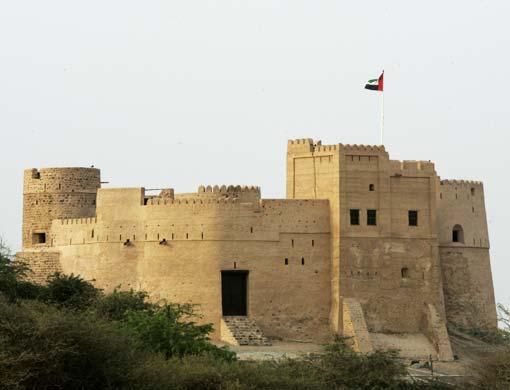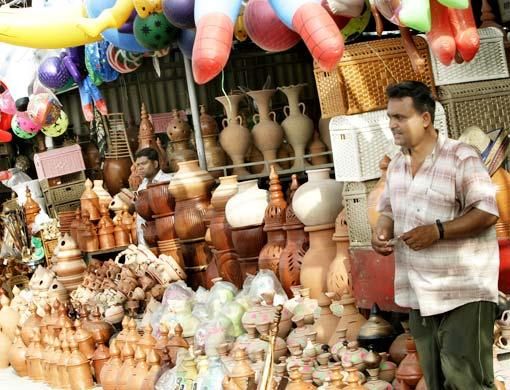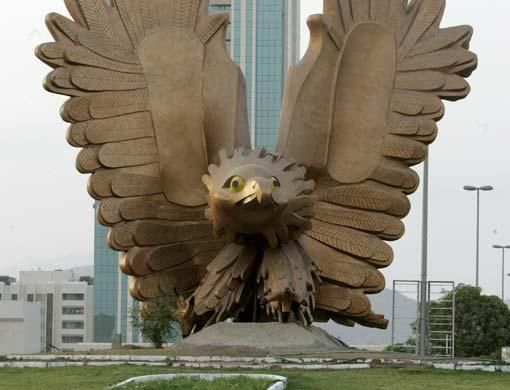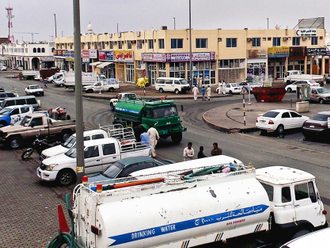If you consider Fujairah, the unsullied jewel of Arabia, as famous for just its rich and deep-rooted cultural heritage, think again. Apart from historical buildings — especially the impressive forts dotting the coast — the eastern coast of the UAE has all the elements to amaze and entertain residents and visitors alike, whether they are on a relaxing weekend break or on an action-packed holiday.
Lying on the shores of the Indian Ocean, Fujairah lends itself to a perfect holiday. Its spectacularly wide and unspoilt beaches are set against outstanding scenery. The grand Hajar Mountains rise on one side and the cerulean sea flashes sunbeams on the other.
Natural beauty
Wadi World, home to 1,00,000 people, shines forth with all of nature's attractions and highways provide easy access to all of them. Apart from a rich cultural heritage, the place also boasts mountains, waterfalls, wadis, islands and fine weather.
The emirate, whose tourist traffic rose by 48 per cent in recent years, offers many exciting activities — four-wheel driving, abseiling, camping and hiking on scenic trails.
Fujairah is also a haven for water-sports aficionados. In fact, Fujairah Marina Club hosts The Powerboat World Championship, each October. With 12 contestants escorted by crew members, this exciting championship sees many side events, too.
The sea here abounds in corals, fish and turtles, making it great for diving and fishing. And, after all these activities, you can return to your hotel to relax.
Located in a valley on the fringes of Fujairah at the foothills of Hajar Mountains, is the 50-hectare Ain Madhab Park, which is fed by sulphuric mineral springs. This water is pumped into swimming pools used by both men and women. On public holidays, the garden holds folk-dance festivals in its amphitheatre.
Close to the Ain Al Madhab gardens is the Fujairah Heritage Village, which gives us a glimpse into the emirate's culture — traditional houses, cooking utensils, fishing methods, traditional boats made of palm fronds and irrigation methods such as the Al Yazrah system, which uses a bull for farming.
In a mountainous area, over 20km south of Fujairah, the waters of another spring, Ain Al Ghamour, touch 60C. Cure seekers and tourists flock there seeking relief from diseases such as rheumatism, backache and arthritis.
World of wadis
Undoubtedly, Fujairah is well known for its boulder-strewn wadis, which provide incomparable views — showing off emerald-green date orchards nestled between the towering Hajar peaks, which contain some of the oldest rocks in Arabia.
The turn-off to wadis and waterfalls is situated on the Dibba to Khorfakkan roadway that joins 'Wadi World', through which water flows throughout the year. And there are many more wadis to see.
Ham is the largest and longest valley that springs from the Masafi area and goes on for 30km. Some others are: Zakt in Dhidna, having an 8km course off the coast; Wadi Wurayah, a scenic spot that is the biggest tourist attraction in the north and has stunning cascades, including the Al Wurayah waterfall; and Wadi Tuwwain, which is 45km from the city and is accessible only by four-wheel-drive vehicles.
If these are not enough, you can also see Wadi Saham, Mai and Bashing and the spectacular Siji Wadi, which stretches to Al Zaid and Umm Al Quwain from the Al Hail area.
Taste of heritage
Getting off the wadi trail, one can see bullfighting — organised at the arena near the bridge leading to Al Righailat. Absolutely bloodless, the sport is just a test of the strength of the animals.
The richness of Fujairah's history and cultural heritage can be associated with its old, impressive forts and the barajeels, traditional wind towers. The importance of its heritage can be estimated by the fact that people have been living here since the Iron Age and also by the discovery of many artefacts.
The archaeological relics excavated by foreign and local explorers — which include Bronze and Iron Age armaments, dyed ceramics, beautifully carved soap stone ewers and pre-Islamic silver coins — are showcased in the Fujairah Museum.
One cannot leave the emirate without seeing some of its most impressive historical monuments — Bithna Fort, Al Biddiya Mosque and Al Hail Summer Palace.
Built in the Wadi Ham, Bithna Fort helped stave off invasions for over a century. The fort is on the main highway leading to Fujairah town.
Al Biddiya Mosque is also known as Ottoman Mosque. Uniquely designed, the four-domed mosque offers views of pretty farms that lie at the foot of surrounding hills.
As revealed by its name, the Al Hail Summer Palace is a summer home for Fujairah royals, the Al Sharqi family. It lies in Hail Wadi. The structure includes an old castle and a breathtaking watchtower, which dates back to 1830. With dining rooms, majlis, reception halls, bedrooms and storerooms, the palace is also furnished with an informal court that was once a waiting room for those who wanted to meet the Shaikhs.
Layla Haroon is a UAE-based freelance writer















